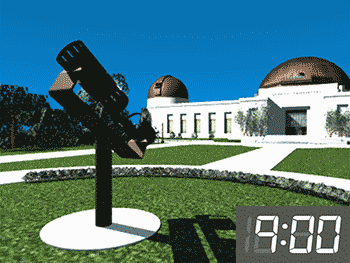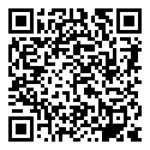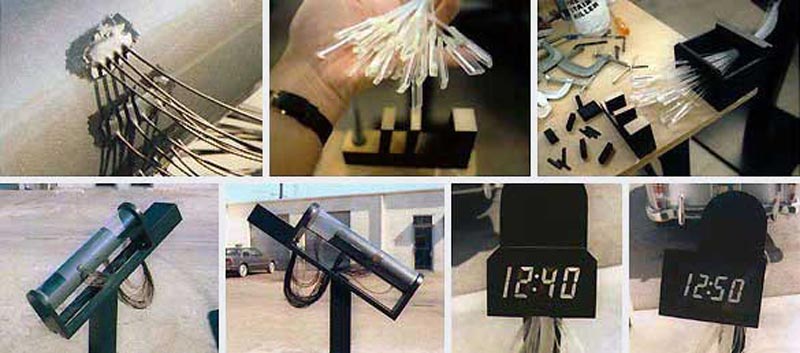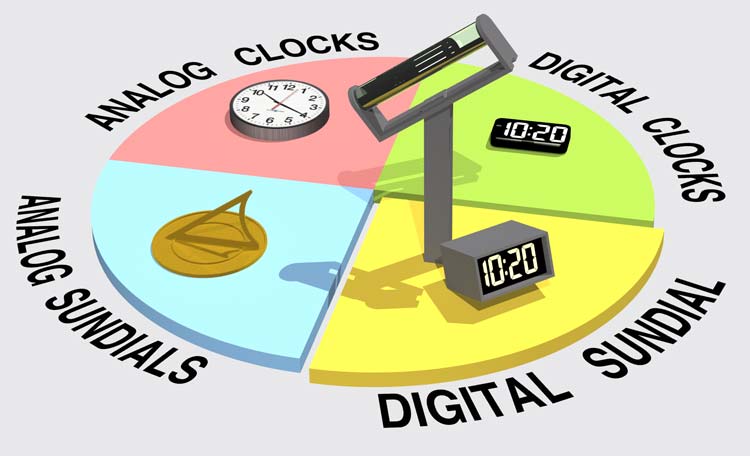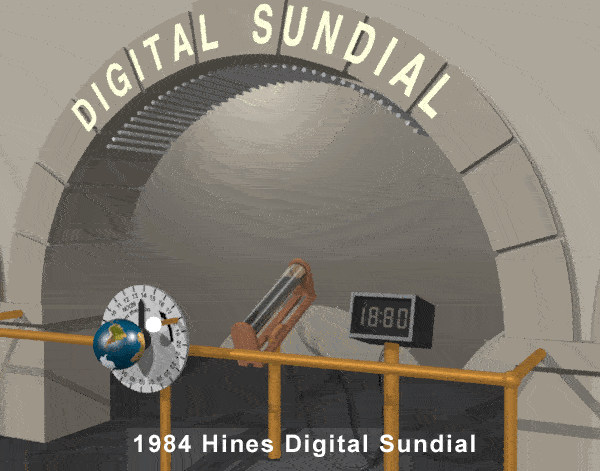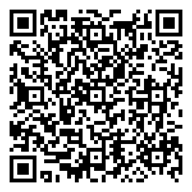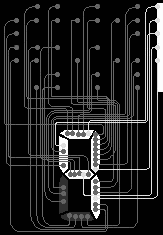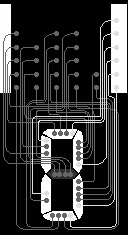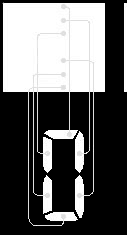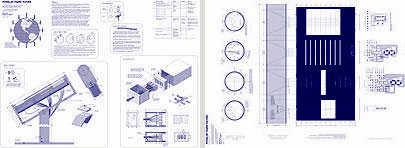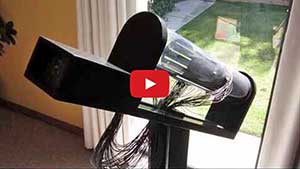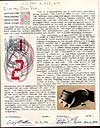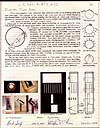Digital Sundial
Hines Digital Sundial
US Patent 4,782,472
Recognized by the North American Sundial Society as
“The first true digital sundial”
| The world’s very first digital sundial was invented by Steve Hines in 1984, and patented in 1988, and shows the time with a true 7-segment digital display. The sun shines through slits in the encoder, onto the ends of optical fibers, that route the light to the segments in the numerical display. | 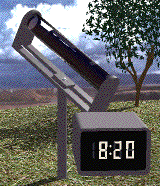 |
| In 1984, Steve Hines invented the first true digital sundial. Shadow-mask sundials appeared 10 years later, and have a limited time range of 3-4 hrs., display in 20-minute increments, and do not use actual 7-segment digital numerals. The Hines Digital Sundial is the world’s first and only true digital sundial. |
|
A 7-segment display is made of seven lines to form a readable number. In the past, all 7-segment displays have been electrical devices. This is the world’s first optical analog-to-digital display. In the digital sundial, optical fibers from the encoder, are clear epoxied to the backs of the seven Plexiglas segments in the display. The display segments are illuminated when sunlight shines on the tips of the optical fibers at the far end in the encoder. Segments can have more than one optical fiber glued to the back. |
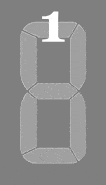 |
Construction:
Optical fibers are shown epoxied in holes in the clear Plexiglas encoding cylinder (combining the functions of a rotary encoder and the gnomon of analog sundials). The opposite ends of the fibers are attached to segments, of a 7-segment numerical display, with clear epoxy. Depending on the position of the sun, various optical fibers illuminate segments to form the numbers.
End view of the cylinder:
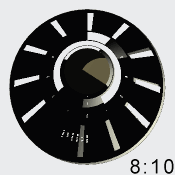 |
Sunlight shines through slits, on the ends of optical fibers as the sun moves across the sky. The opposite end illuminates a segment of the display to form a readable number. |
The four categories of timekeeping devices:
All timekeeping devices fall into four categories: analog or digital clocks, or analog or digital sundials. The digital-sundial category has gone without an example until the Hines digital sundial, invented in 1984 and recognized by the North American Sundial Society as the “First True Digital Sundial”.
The sundial in an interactive museum:
Advantages of the Hines digital sundial over other other sundials:
- It provides the time at a glance.
- The display can be routed inside an air conditioned house, classroom or museum.
- The display being at almost any distance from the encoding cylinder at the far end of a fiber-optic bundle.
- The 7-hour time range, from 9 AM to 4 PM, in 10-min. increments.
- The educational value of being the world’s first optical A-to-D converter.
- Not having to position the encoding cylinder at eye level. The ability to have the encoding cylinder in an out-of-the-way location, on a roof, etc. and less likely to encounter the shadows of trees or malicious damage.
Advantage of the Hines digital sundial over other timekeeping devices of any type:
- Being able to read the time on a 7-segment digital display without dependence on any electrical power.
Sundial Resources:
- Blueprints, HinesLab, see below
- Amazon, 4″-dia. acrylic tube
- ePlastics, 4″-dia. cast acrylic tube
- Harvard Univ. sundial collection
- Industrial Fiber Optics, optical fiber
- National Maritime Museum, Greenwich, England
- North American Sundial Society
- Smithsonian Institution, Washington, DC
- Sundial Magazine, England
- Wikipedia
.
How it works:
As the sun moves across the sky, sunlight shines through slits in the top of the encoding cylinder and sweeps over the ends of optical fibers in the bottom of the cylinder to illuminate the segments of the numerals. The following animations are without any phase relationship.
Blueprints:
Construction drawings (PDF format) to build one 4″-diameter cylinder digital sundial are available for $200. Please send an email or text message if you send payment, to avoid a delay in our providing the drawings.
-
- Steve Hines
- HinesLab, LLC
- email for the address
- Virginia Beach
- Virginia, USA 23452
Comments:
- “Your work is fascinating, and the sundial is an intriguing combination of components and engineering” Dr. Carlene Stephens, Curator, Smithsonian Museum, Dec. 19, 2023
- Hines digital sundial, recognized by the North American Sundial Society as “The First True Digital Sundial“. Oct. 2, 2014
- U.S. Patent 4,782,472, issued to S. Hines, November 1, 1988
Activity:
- plans ordered by Rick Steenblik, September 18, 1985
- U.S. Patent 4,782,472, issued to S. Hines, November 1, 1988
- Solar Today Magazine, August 20, 1994 issue, p. 39
- plans ordered bt Phillip Rogen, September 6, 1994
- plans ordered by Robert McGrath, September 10, 1994
- plans ordered by William Georgian, September 27, 1994
- plans ordered by Robert Siebert, Nov. 1, 1994
- plans ordered by William Georgian, September 23, 1994
- plans ordered by James Luttrell, January 21, 1995
- plans ordered by Hans Sassenburg, May 1, 1999
- information requested by Sundials magazine, November 29, 2001
- plans ordered by Till Liepmann, April 1, 2002
- incorporated in paper presented by Bob Kellogg, at the North American Sundial Society conference in Banff, Alberta, Canada, August 21-24, 2003
- plans ordered by Charles Ashcroft, Sept. 7, 2007
- plans ordered by Punjab Engineering College, India, February 6, 2008
- plans ordered by Bret Niemeyer, June 28, 2011
- plans ordered by Pat O’Grady, Sept. 4, 2014
- North American Sundial Society (NASS) declares it “The First True Digital Sundial“, October 2, 2014
- plans ordered by Edgar Kogler, April 24, 2018
- “Great design“, Jean-Baptiste Rouquier, Dec. 27, 2022
HinesLab
Virginia Beach, VA, USA
23450
an>

